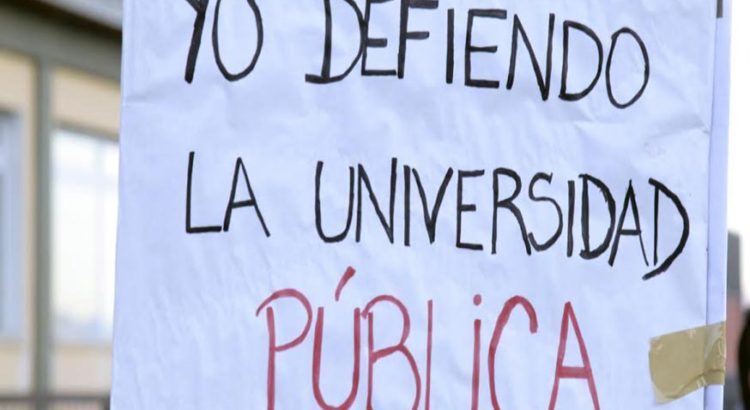12 Noviembre 2017/Fuente: La Jornada/Autor: Alfredo Valadez Rodríguez
El Sindicato de Personal Académico de la Universidad Autónoma de Zacatecas (Spauaz), no va a renunciar a ninguna de las cláusulas de su contrato colectivo, porque no fueron dádivas del estado mexicano, sino prestaciones que han sido producto de muchas décadas de lucha”, advirtió Pedro Martínez Arteaga, secretario general de esa organización.
El líder de los docentes universitarios señaló que si bien el pasado miércoles no estalló la huelga, por el cerrado margen de diferencia de sólo 11 votos para evitarla, como resultado del plebiscito realizado al interior del Spauaz, eso no implica dijo, que se vaya a renunciar a otros métodos de lucha y a la exigencia de que se canalicen mayores recursos, por parte del gobierno federal y estatal, a la UAZ. Y tampoco dijo, quedará sujeto a negociación un posible recorte de personal académico.
Las universidades públicas del país, indicó Martínez Arteaga en entrevista con La Jornada, atraviesan por un “momento muy peligroso”, derivado de las declaraciones recientes que Aurelio Nuño hizo en París, Francia, en el sentido de que será abierta en la ciudad de Monterrey la Universidad Franco –Española.
“Y dijo Nuño que las 12 universidades púbicas de éste país, tenemos que transitar por ahí, si queremos reestructurarnos”.
Es decir, acotó el dirigente del Spauaz que “esto de la educación universitaria en México se va a volver muy elitista, se va a privatizar”. Y en este escenario de exigir la formación bilingüe no solo se meterá a las universidades, sino también a los maestros de las instituciones públicas de nivel medio superior.
Pues lo planteado por el secretario de educación Aurelio Nuño, es que quienes no cumplan con éste requisito, no tendrán subsidio y respaldo presupuestal, lo que terminará afectando directamente a toda la adolescencia y juventud mexicana de las clases media y baja, que son la gran mayoría en nuestro país, pues muchas instituciones educativas cerrarían sus puertas, o estarían obligadas a cobrar cuotas altas, a privatizarse.
“Pues no tenemos a los Cebetis, a los Cebetas, a los Colegios de Bachilleres, pocas escuelas tendrían la capacidad de ‘entrar’ a éste modelo bilingüe planteado por Nuño. Peor aún, de todos los profesores universitarios en el país, pocos seremos los que en este momento podemos hablar el inglés y el español, si es bilingüe, o de dominar el francés. Esto es una situación de discriminación y exclusión, violentando un derecho humano”.
Martínez Arteaga también alertó sobre la posición de amedrentamiento que existe en algunas dependencias del gobierno federal, contra las universidades públicas del país, ya que por ejemplo, acotó, en el caso de la UAZ, si el pasado miércoles hubiera estallado la huelga, entonces aseguró, se hubieran “cerrado puertas”.
“La huelga –que es un derecho legítimo-, sin embargo nos hubiera cerrado la puerta la Secretaría de Hacienda, para una negociación de mayor subsidio emergente, para cerrar el presente año. Particularmente a mí como líder del SPAUAZ, me hubieran dicho ‘¿cómo estalla la huelga y viene a pedir? Pero aun con el no a la huelga, de todos modos hoy no tenemos garantía de buen trato”.
Por todo lo anterior, ahora propuso Martínez Arteaga, es necesario que todas las universidades públicas del país que se encuentran en quiebra técnica por la falta de presupuesto gubernamental, unan fuerzas, sindicatos y rectores, para garantizar la sobrevivencia de la educación pública superior gratuita en México.
Fuente de la noticia: http://www.jornada.unam.mx/ultimas/2017/11/09/universidades-publicas-atraviesan-201cmomento-muy-peligroso201d-lider-sindical-2447.html
Fuente de la imagen: http://unjuradio.com/wp-content/uploads/2016/05/Universidad-Publica








 Users Today : 51
Users Today : 51 Total Users : 35460260
Total Users : 35460260 Views Today : 68
Views Today : 68 Total views : 3418963
Total views : 3418963